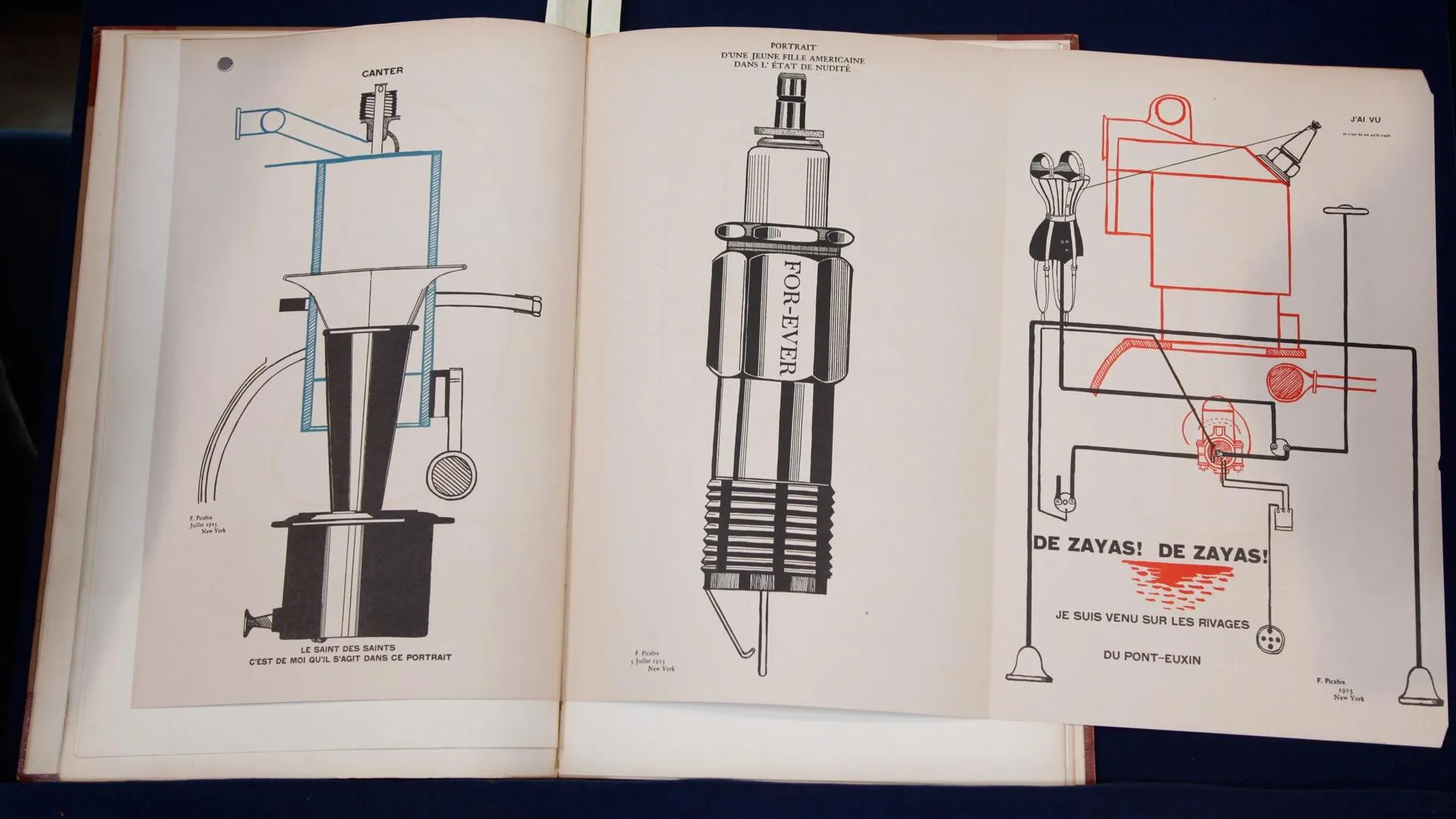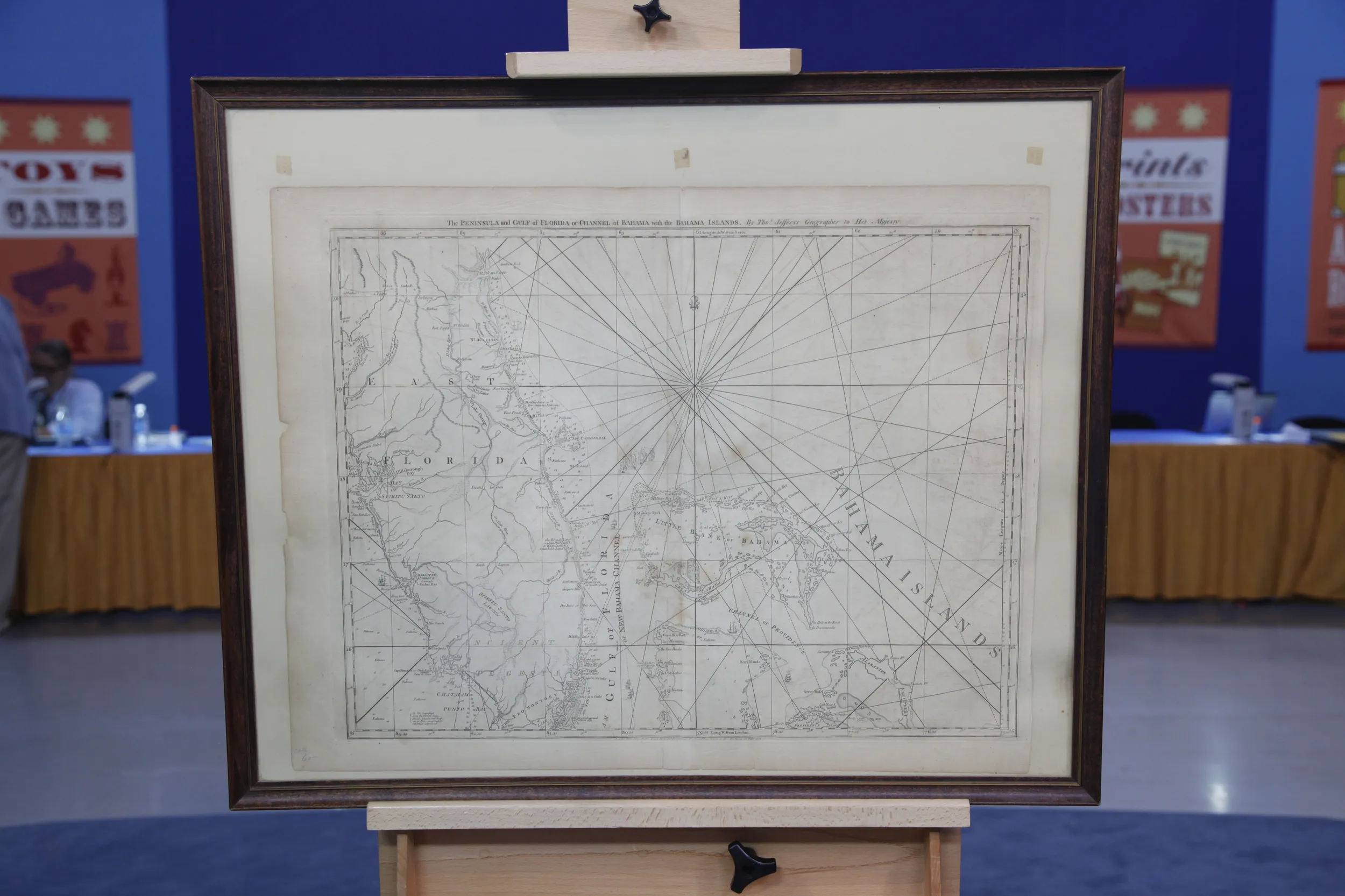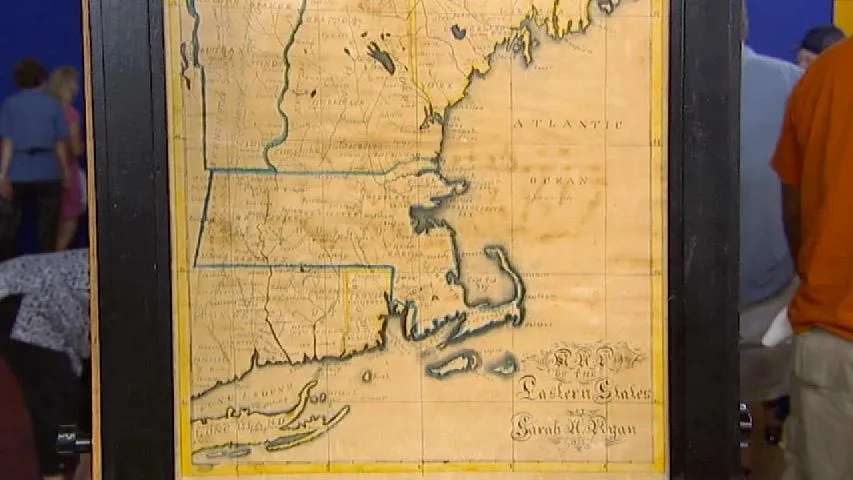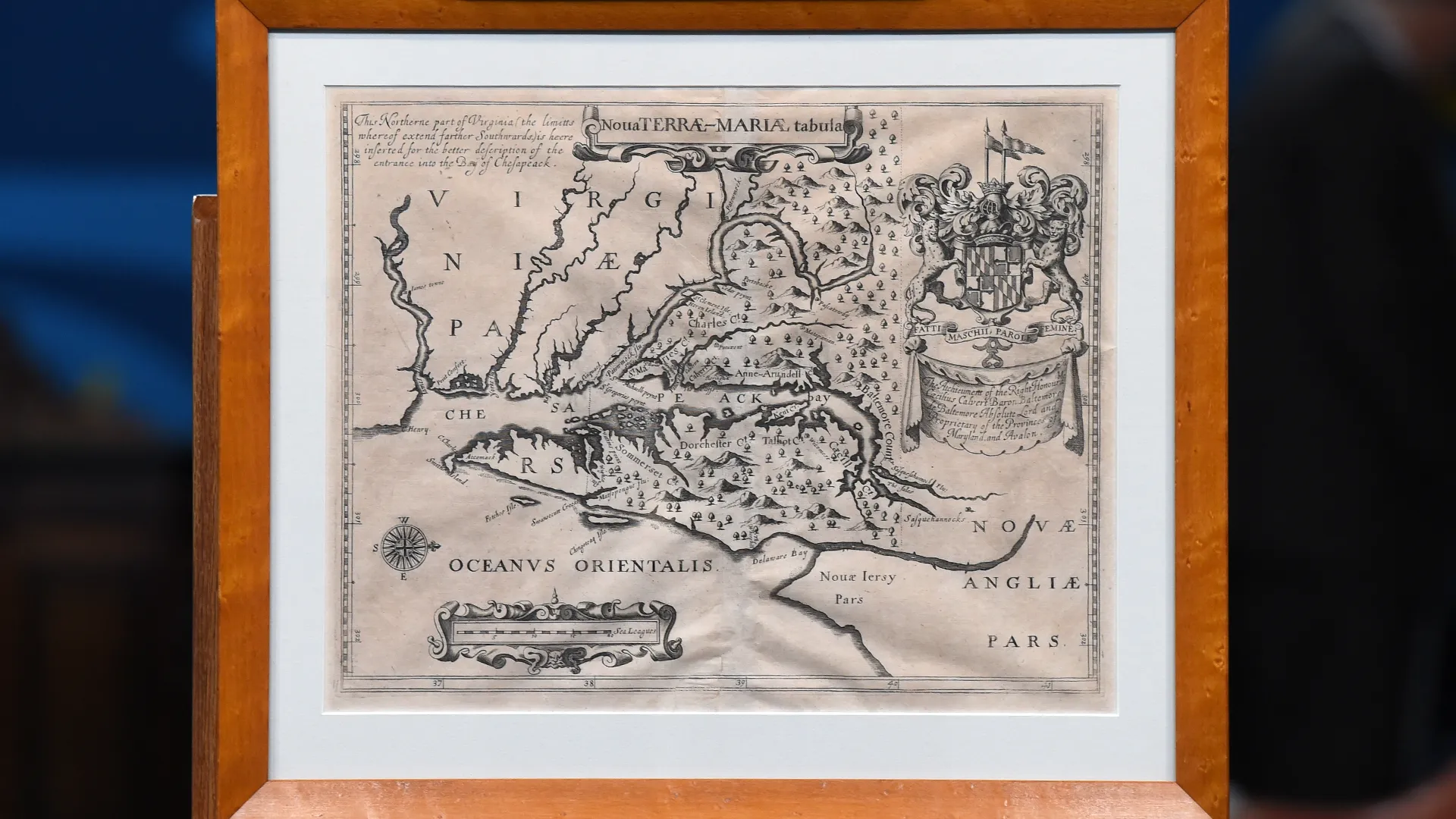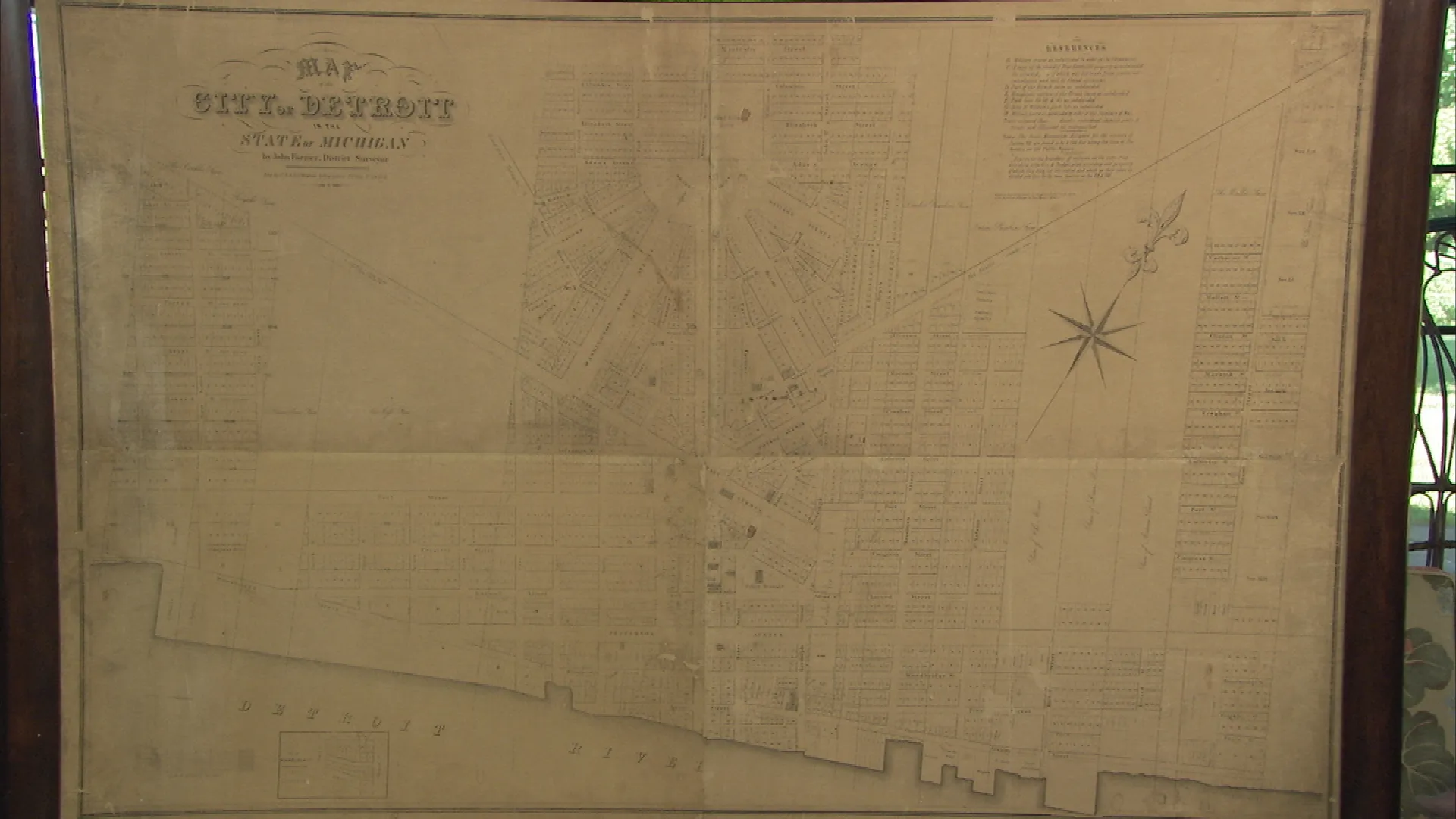GUEST: My father went to school in Scotland and then came back to the States, and that childhood made him very history and geography-oriented. He moved to Costa Rica and couldn't take everything with him, so he gave me these.
APPRAISER: This is certainly one of the first and earliest Trans-Mississippi West maps. It's the earliest printed map to show both North and South America divided by an isthmus. It was done in Basel, Switzerland. The geographer was a man named Sebastian Münster. And the wood block was made in 1540. And these wood blocks were used from 1540 to actually 1588, when new wood blocks were made because of added information. In the wood block, they cut little rectangular squares into the wood block and set moveable type into that to produce this in an offset way. The interest is in the Americas. And going down the coast of North America, it goes all the way up to the maritime provinces. There's areas here that are just not mapped yet, but one of the things that we know, this piece of information here, this body of water, is called the "False Sea of Verrazano." When Verrazano came up the east coast of North America, he missed Chesapeake Bay. He did find New York Bay because now we have the Verrazano-Narrows Bridge, but he did look across Pamlico Sound off the Carolina coast, and he saw a body of water. He extrapolated that that body of water went all the way to the Orient because that's what he wanted to believe. You have two different flags. This is the flag of Spain; this is the flag of Portugal. This goes back to the Treaty of Tordesillas, when the Pope said, "I'm going to split the New World between Spain and Portugal so that you two won't fight over it." Well, it was a geographical mistake because the line kind of came down through here, so Brazil ended up being Portugal, and all the rest was Spain. As we look at Brazil, this little wood block illustration shows a native hut. And, of course, this is sort of the anti-image of America. You have this fascinating picture of a cannibal hut, and here's a leg. Did you ever notice this leg hanging off?
GUEST: No.
APPRAISER: Well... (laughs)
GUEST: It's a little scarier now.
APPRAISER: You go on down through here, and this is Magellan Straits, Magellanica. Magellan didn't know this was an island. He thought that there was a continent down here. Again, he extrapolated. Going into the Pacific, this is Magellan's ship that's being shown. We know another source of this map was Marco Polo because as you go up into the middle of the Pacific, you have the island of Zipangi. Well, Zipangi was Marco Polo's name for Japan. The text here is in German. There's German text on the back. You will find Münster's maps in French, in Italian. A lot of them are in Latin. This particular map is a collector's gem. It's got beautiful old color. We never know for sure when it was colored. Some were colored originally; some were colored in subsequent centuries. Retail price for this would be $4,500.
GUEST: Wow.
APPRAISER: At an auction, you might get higher. You might get lower, but still, that's where I would settle in on this.
GUEST: I'm so excited. I'm just so thrilled.

